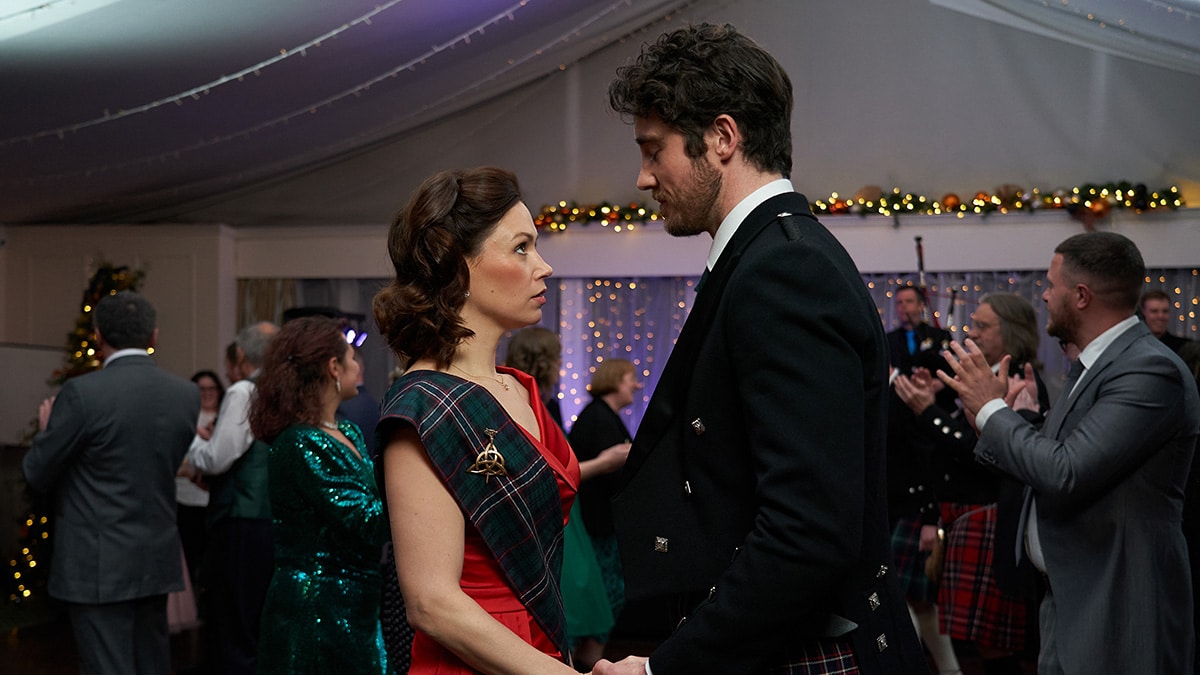Tennis
Inside Tennis Great Andy Murray’s Dreamy Scottish Country House Hotel

A guest suite at Cromlix
It’s easy to imagine that newly retired tennis star Sir Andy Murray—who Sky Sports just called “arguably Britain’s greatest ever athlete” after his final Olympics—might have given into the temptation to decorate his Scottish country house hotel with memorabilia. This is the home that tennis built! A star shines here!
But instead, his newly updated Cromlix hotel is a stately homage to Scotland’s history—and present—as well as his family’s personal history. The house was originally built in 1874 on an estate near Murray’s hometown of Dunblane that had belonged to an aristocratic family since the 15th century. (It was later rebuilt after a fire.) After it was converted to a hotel in 1982, the first party it hosted was the silver anniversary celebration of Murray’s grandparents, Roy and Shirley Erskine.
In the decades that followed, it became the family’s go-to spot for formal festivities. The Erskines celebrated their golden and diamond anniversaries there, with a young Andy in attendance, and their descendants used it for blessings, birthdays and weddings, including Andy’s own, to Kim Sears in 2015.
Andy Murray in the billiards room, his favorite in the hotel
The tennis star developed such a fondness for the place that by the time of his wedding, he already owned it, having purchased it with Kim in 2013. He felt an emotional connection with it and wanted to save it, says Emily Shields, the hotel’s head of marketing. But those years were the peak of his career and the beginning of creating their family, so they remained in a partnership with a management company.
Two years ago, that contract ended, and the Murrays had more time and money. They set about putting their own mark on it. Kim was heavily involved in the design, leavening the old-fashioned Britishness with contemporary touches and nature motifs. Shields calls it “modern Scottishness,” an aesthetic defined more by soft natural colors than by dark, severe tartans. A collection of playful contemporary art—some the Murrays’ own, some on loan from Britain’s Royal Society of Art—including large works from David Shipley and Damien Hirst, livens things up.
Now the 15 suites are named for flowers and herbs, and the rooms, with their floral wallpapers and substantial antiques, are suffused with natural light. The fussy old logo of a family crest was replaced by a stylized flower—an announcement that this is not your grandmother’s country house hotel (even though Murray’s grandmother’s recipe is the basis for the shortbreads that are complementary in the guest rooms).
The hotel bar
Likewise, the hotel restaurant got an update. In place of the elaborate French style that was once synonymous with fine dining, the kitchen now follows the usual local and seasonal trends. “We aren’t counting food miles but food footsteps,” says Shields. That’s not an easy goal at this latitude, but a kitchen garden supplies vegetables and herbs, chefs forage for mushrooms, and the hotel maintains relationships with local butchers and fishmongers.
The food is elevated but not complicated. As Shields says, the aspiration is not a regular Michelin star but one of the new green ones, which recognizes a restaurant’s commitment to sustainability.
Besides dining and lounging, the hotel offers a few bucolic pursuits. Wellies are lined up in the anteroom for ambles on the (often boggy) grounds. Bird handlers from local company Elite Falconry can come in with a vanload of Harris’s hawks, peregrine falcons, spotted owls and various eagles for flying demonstrations and photo ops. And obviously there’s tennis.
The exterior of Cromlix
And here is the one place Murray’s professional life comes into play. The court is a specific shade of lavender, the one that’s used at Wimbledon and is trademarked for that tournament. But Murray liked it and wanted it, and apparently this is one of the perks of holding two Wimbledon titles.
But a relationship with the nearby Adam Brown Tennis Academy makes the sport accessible for anyone; the coach who came in for my lesson has been a friend of the Murray family for years, and he made me feel like a rock star for returning a series of easy serves. (Cromlix also has a pickleball court, because Andy’s mother enjoys the game; unsurprisingly, it’s popular with North American guests.)
It’s worth noting that the famous Gleneagles is just 20 minutes away, and Cromlix shares that same scenery. But if Gleneagles presents a resort as place of entertainment, then Cromlix does the opposite. Even with the current plans for a significant expansion, it will remain intimate (perhaps with 25 rooms) and homey. Its promise is the feeling of being welcomed into a family residence. It’s settling in to a fire-warmed drawing room or a flower-strewn garden. It’s having, as Shields says, a “do-nothing-cation.”










